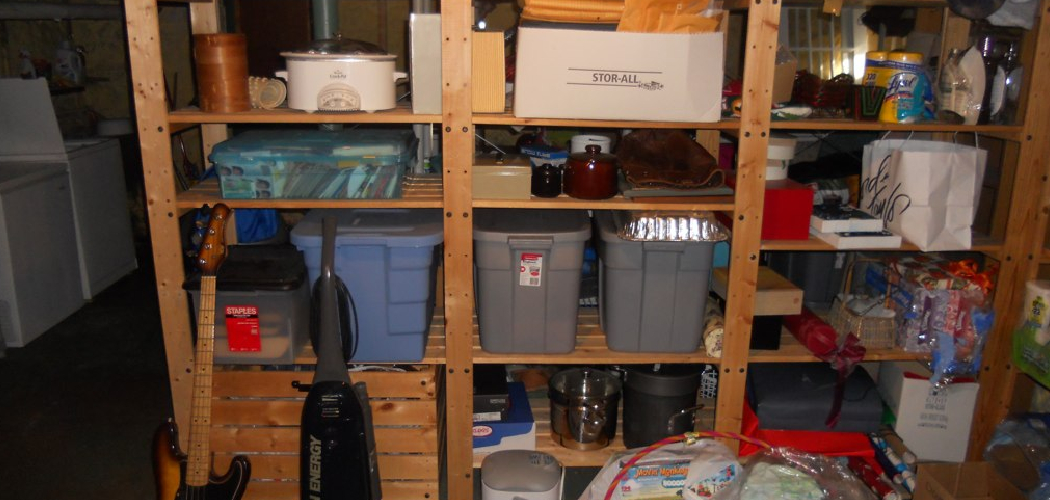Are you looking to create more storage space in your basement? Do you feel like there’s never enough room for all of the clutter? Well, we’re here to tell you that all your worries can be solved with the creation of custom basement storage shelves! Shelves are an easy and inexpensive way to make use of those awkward corners and forgotten spaces.
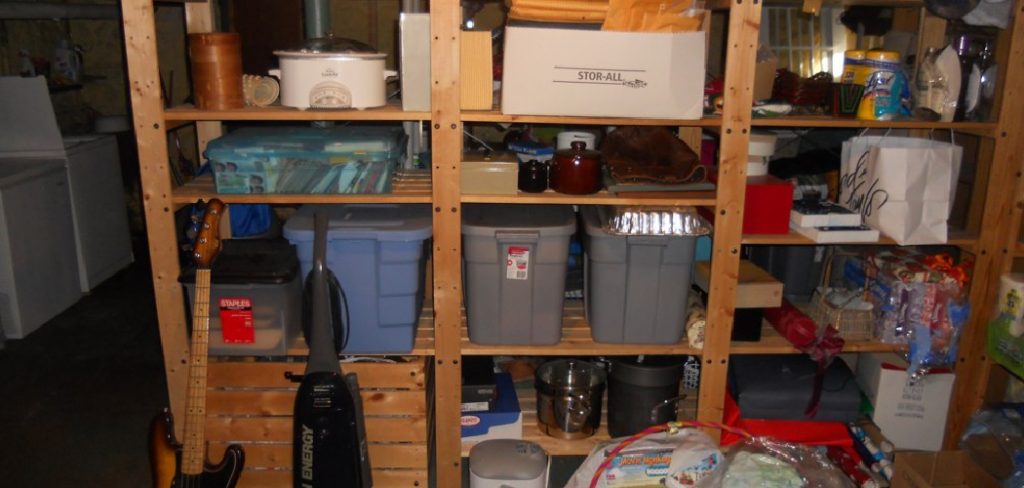
Not only can they give you the perfect spot for storing items, but they also provide ways to add character and spruce up any area of your home. In this blog post, we’ll go over how to build basement storage shelves in a basement by providing step-by-step instructions. From picking out materials, measuring pieces, and installation tips – this guide will get you organized in no time!
Is It Cheaper to Build Your Own Shelves?
Building your own shelves for basement storage is usually much cheaper than buying pre-made shelves. The cost of the materials to build your own shelves will depend on the size, type of material used, and the number of shelves you need. On average, building your own shelves will cost around half of what it would cost to purchase pre-made shelves.
Additionally, when you build your own shelves for basement storage, you can customize the size and shape to fit your space perfectly as well as ensure that they are made with quality materials and built to last. You can also be certain that they are securely attached to the wall and properly reinforced to hold the weight of your items.
Building your own shelves does take some skill and knowledge, but with a little research and some patience, anyone can learn how to build basement storage shelves. It is also important to know which materials will be best for your specific application in order to ensure that they are strong enough to support the weight of the items you plan to store.
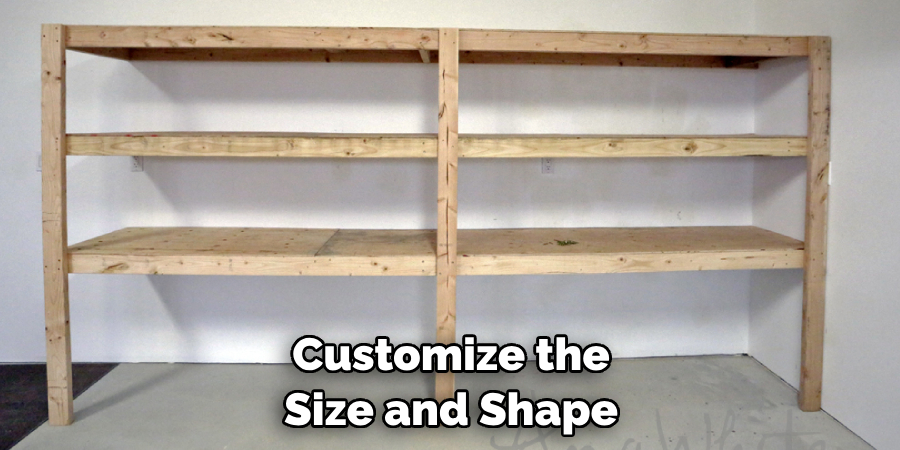
What Is a Good Material for Shelves?
When it comes to the material you should use for your basement storage shelves, there are several factors to consider. If you want an inexpensive and easy-to-assemble option, then particleboard or plywood are both great choices.
However, if you want something that won’t sag over time and is a bit more heavy-duty, then you should look into MDF boards or solid wood boards. Each material has its own benefits and drawbacks, so it’s important to decide which one will best fit your needs. If you are unsure, then it’s always a good idea to consult with a professional carpenter or builder for advice.
When it comes to shelving brackets, you can use traditional brackets or even floating shelves. Traditional brackets will give you a more secure shelf while floating shelves provide a more modern look. Whichever option you choose, make sure that the brackets are strong enough to support the weight of the items you plan to store.
Finally, if you want a more permanent solution, then you can purchase pre-made garage shelving units, which are usually made of metal. They are durable and can hold a lot of items, but they may require more installation time than other materials.
10 Methods How to Build Basement Storage Shelves
Method 1: Standard Lumber Shelving
One of the simplest methods for building basement storage shelves is using standard lumber. Measure the dimensions of your basement walls and determine the desired height and width for the shelves. Purchase sturdy 2×4 or 2×6 lumber and cut it into lengths to serve as the vertical supports and horizontal shelves.
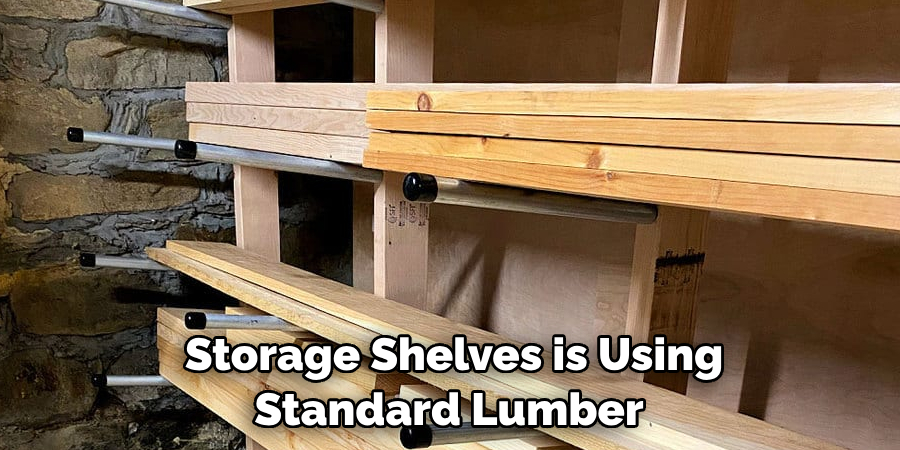
Use a level to ensure the shelves are straight and attach them to the wall studs using screws or nails. This method is cost-effective and versatile, allowing you to customize the size and arrangement of the shelves to suit your storage needs.
Method 2: Adjustable Shelving Units
If you prefer flexibility and the ability to reconfigure your storage space, consider using adjustable shelving units. Purchase adjustable metal shelving units that come with adjustable brackets and shelves.
Assemble the units according to the manufacturer’s instructions and position them in your basement. This method allows you to easily change the height and spacing of the shelves to accommodate different storage items and adapt to your changing needs.
Method 3: Plywood and 2×4 Shelving
For a sturdy and budget-friendly option, plywood and 2×4 shelving can be a great choice. Measure the dimensions of your basement walls and cut plywood sheets to serve as the shelves. Cut 2×4 lumber into lengths to serve as vertical supports and horizontal beams. Attach the beams to the wall studs and attach the shelves to the beams using screws or nails.
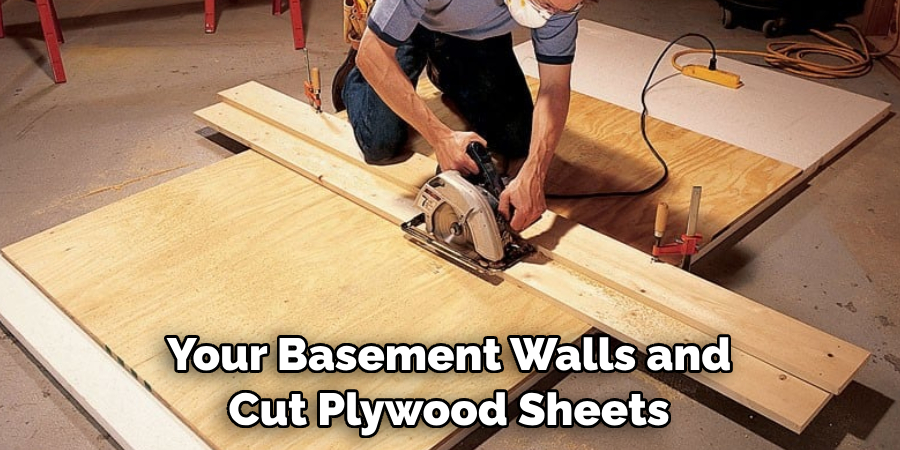
This method provides a solid and durable storage solution that can hold heavy items. Cover the shelves with paint or varnish to give them a more finished look. With this method, you can easily customize the storage solution to any space.
Method 4: Pipe Shelving
If you prefer an industrial or modern look, consider building pipe shelving in your basement. Purchase metal pipes, flanges, and fittings in the desired dimensions and configuration. Assemble the pipes and fittings to create the vertical supports and horizontal shelves. Attach the assembled pipe shelves to the basement walls using appropriate anchors and screws.
This method adds a unique and stylish element to your storage space and allows for easy customization in terms of size and design. The shelves can also be easily adjusted and rearranged to fit your needs. This is a great solution for those looking for an attractive yet functional storage solution.
Method 5: Wall-Mounted Wire Grids
Wall-mounted wire grids provide a versatile and adjustable storage solution for your basement. Purchase wire grid panels in the desired dimensions and attach them to the basement walls using appropriate anchors and screws. Use hooks, baskets, or bins to hang or store items on the wire grids.

This method allows for easy organization and visibility of your stored items, as well as the flexibility to rearrange and customize the storage layout as needed. To maximize efficiency, take time to plan how items will be sorted and stored before you hang any grids. With wall-mounted wire grids, your basement storage possibilities are endless!
Method 6: Overhead Ceiling Shelves
If you have limited floor space in your basement, consider building overhead ceiling shelves. Measure the dimensions of your basement ceiling and determine the desired height and width for the shelves.
Construct a sturdy frame using 2×4 lumber and attach it to the ceiling joists using appropriate hardware. Attach plywood sheets or other suitable materials to create the shelves. This method maximizes vertical space and provides additional storage capacity in your basement.
Method 7: Modular Cube Storage Systems
Modular cube storage systems offer a versatile and customizable solution for basement storage. Purchase modular cube storage units that come with individual cubes or shelves. Assemble the units according to the manufacturer’s instructions and arrange them in your basement.
This method allows you to create different configurations and e5asily add or remove cubes as needed. It also provides a clean and organized look for your basement storage space. If desired, you can even purchase fabric drawers and bins to fit inside the cubes for extra organization. Make sure to use a level when assembling the units to ensure they are straight and secure.
Method 8: Cinder Block Shelving
Cinder block shelving is a durable and inexpensive option for basement storage. Purchase cinder blocks and cut plywood sheets to serve as the shelves. Stack the cinder blocks in the desired configuration, ensuring they are stable and level. Place the plywood sheets on top of the cinder blocks to create the shelves.
This method allows for easy customization in terms of size and arrangement and can withstand heavy loads. Be sure to secure the shelves to the wall for added stability. Paint or stain the cinder blocks and plywood for a more finished look. With a few simple materials and tools, cinder block shelving is an easy and effective way to build basement storage shelves.
Method 9: Pegboard Storage Wall
A pegboard storage wall offers a versatile and customizable storage solution for your basement. Mount a pegboard on the basement wall using appropriate anchors and screws. Install hooks, shelves, and other accessories on the pegboard to hang and store items. This method allows for easy organization and visibility of your stored items, as well as the flexibility to rearrange and customize the storage layout based on your needs.
Method 10: Repurposed Furniture
If you’re looking for a creative and unique approach to basement storage, consider repurposing furniture pieces. Look for old bookshelves, cabinets, or dressers that can be modified to fit your basement space.
Remove unnecessary parts and shelves, reinforce the structure if needed, and attach the furniture pieces to the basement walls or floor for stability. This method not only provides storage but also adds character and a touch of personal style to your basement.
Conclusion
A basement storage shelf can be an incredibly useful addition to any home. It provides you with much needed extra storage space, without taking up too much floor to ceiling space. With the right materials and instructions, you can successfully build your own basement storage shelves in no time.
Whether you’re a beginner or a seasoned DIY-er, this guide has provided all the tips and tricks you need for constructing your own shelving unit. Get out there and start organizing those items currently residing in boxes on the floor! For further steps on how to build basement storage shelves, check out our comprehensive guide. Now it’s your turn – grab some wood and start building!
